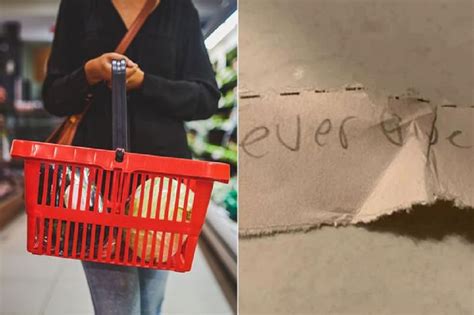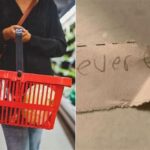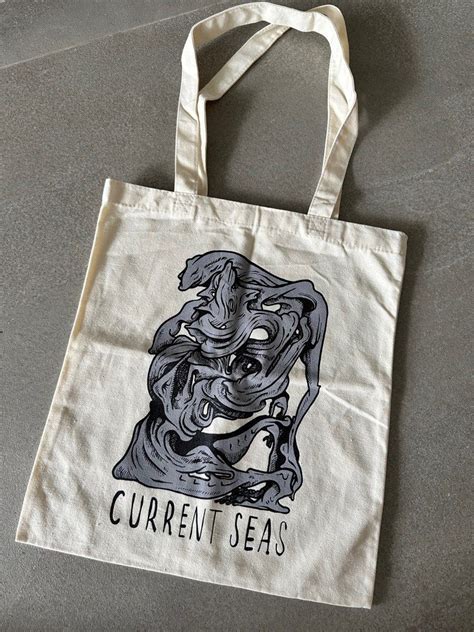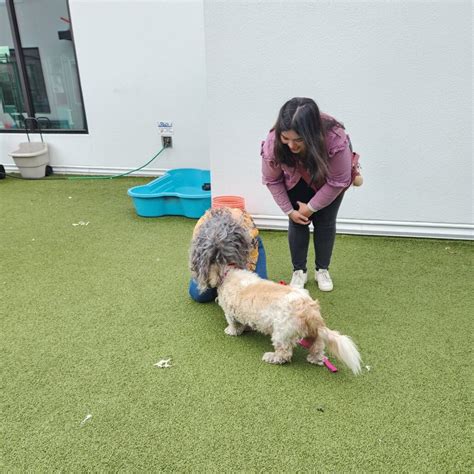
A shopper in Virginia made an unexpected and touching discovery inside a thrift store bag: a heartfelt letter from the bag’s original owner detailing her life and the cherished items within.
A Virginia woman’s routine thrift store visit turned into an emotional experience after she discovered a handwritten letter inside a bag she purchased. The letter, penned by the bag’s original owner, offered a poignant glimpse into her life, her struggles, and the memories attached to the items she was donating. The shopper, identified as only “Laura” in news reports, shared her discovery on social media, sparking a wave of reactions and highlighting the often-unseen stories behind donated goods.
Laura, speaking to local news outlets, described her initial surprise at finding the letter tucked inside the thrift store bag. “I was just going through the bag, and I found an envelope,” she recounted. “I opened it up, and it was a letter. It was very personal, very heartfelt.” The letter, which Laura has chosen to keep private out of respect for the original owner, detailed significant moments in the woman’s life, including personal hardships, triumphs, and the emotional connections she had with the donated items.
The discovery has resonated with many online, prompting discussions about the stories behind donated items and the emotional weight they can carry. “It really made me think about the person who had owned these things,” Laura said. “It made me appreciate the fact that I was giving them a new life, in a way.”
According to the original Yahoo Lifestyle article, the letter provided a narrative that transformed a simple thrift store purchase into a meaningful connection with a stranger. The anonymous author of the letter shared intimate details about her life, creating a sense of empathy and understanding in the reader.
The incident has also sparked a broader conversation about the ethics of reading personal letters found in secondhand items. While some argue that the content of the letter should remain private, others believe that sharing the story can bring awareness to the human element of thrift store shopping and the importance of mindful consumption. Laura herself has grappled with the decision of whether to try and locate the letter’s author, ultimately deciding to respect her privacy.
This discovery underscores the idea that thrift stores are not just repositories for unwanted goods, but also treasure troves of untold stories. Each item carries a history, a memory, and a connection to its previous owner. The heartfelt letter serves as a reminder of the human lives intertwined with the objects we consume and discard.
The widespread attention the story has received highlights the power of human connection and the ability of simple acts of kindness to create a ripple effect. Laura’s decision to share her experience has encouraged others to reflect on their own consumption habits and the potential impact of their donations. It has also served as a reminder that even in a world of mass production and disposable goods, there is still room for sentimentality, empathy, and the preservation of personal stories.
The thrift store where Laura made her discovery has not been publicly identified, but the incident has prompted calls for thrift stores to implement procedures for handling personal items found in donations. Some suggest that stores should train employees to identify and remove potentially sensitive documents or photographs before placing items on the sales floor. This would help to protect the privacy of donors and prevent similar situations from occurring in the future.
The story serves as a reminder of the hidden histories within our everyday objects and the importance of treating them with respect and care. Whether it’s a piece of clothing, a household item, or a handwritten letter, each object has a story to tell, and it is up to us to listen and learn from it.
The event also brings to light the increasing popularity of thrift shopping. Driven by environmental concerns, economic factors, and a desire for unique and vintage items, more and more people are turning to thrift stores as a sustainable and affordable alternative to traditional retail. This trend has not only reduced waste but has also created opportunities for unexpected discoveries and meaningful connections, as exemplified by Laura’s experience.
By sharing her story, Laura has encouraged others to approach thrift store shopping with a renewed sense of awareness and appreciation. She has reminded us that every item has a past and that by giving it a new home, we are not only extending its life cycle but also becoming part of its ongoing story.
Expanded Context and Analysis
The experience of finding a personal letter inside a thrift store bag resonates deeply because it touches upon several universal themes: human connection, the value of personal stories, the life cycle of objects, and the ethics of consumption. The story highlights the idea that even in an era of mass production and digital communication, tangible objects still hold significant emotional weight.
The letter itself represents a form of personal narrative – a snapshot of someone’s life, struggles, and memories. It provides a window into the author’s experiences, allowing the reader to connect with her on a human level. The fact that the letter was found unexpectedly adds to its poignancy, suggesting that even in the seemingly mundane act of thrift store shopping, there is potential for profound encounters.
The story also raises questions about the life cycle of objects and the concept of “stuff.” In a consumer-driven society, many items are quickly discarded after serving their initial purpose. Thrift stores offer a second life for these objects, giving them a new purpose and a new home. However, the story reminds us that these objects are not just inanimate things; they are often imbued with personal meaning and memories. By donating items to thrift stores, people are not just getting rid of clutter; they are also relinquishing a part of their personal history.
From an ethical perspective, the story raises questions about privacy and respect for personal information. While Laura’s discovery was accidental, it raises the issue of whether it is ethical to read personal letters or other documents found in secondhand items. There is no easy answer to this question, as it depends on individual values and the specific circumstances of the situation. However, the story encourages us to consider the potential impact of our actions on others and to exercise caution when handling personal information.
The rise of thrift shopping as a sustainable and ethical alternative to traditional retail further underscores the significance of this story. As consumers become more aware of the environmental and social costs of fast fashion and mass production, they are increasingly turning to thrift stores as a way to reduce waste and support local communities. Thrift shopping not only allows people to find unique and affordable items but also provides a way to give new life to pre-owned goods.
Psychological Impact
The narrative also touches on the psychological impact of possessions and the act of decluttering. For the original owner of the bag, donating the items and writing the letter may have been a cathartic experience. Decluttering can be a way of letting go of the past and making space for new experiences. The letter may have served as a way for the owner to process her emotions and say goodbye to the items before passing them on.
Conversely, for Laura, the discovery of the letter may have evoked a sense of empathy and connection. Reading about the life of a stranger can be a powerful experience, reminding us of our shared humanity and the interconnectedness of our lives. It can also prompt reflection on our own values and priorities.
Societal Implications
The story has broader societal implications as well. It highlights the role of thrift stores in providing affordable goods to low-income communities. Thrift stores often serve as a vital resource for people who are struggling to make ends meet. By donating unwanted items, people can help to support these communities and reduce waste.
The story also underscores the importance of community and connection. In an increasingly fragmented society, it is easy to feel isolated and disconnected from others. The story reminds us that even small acts of kindness and compassion can make a big difference in people’s lives. By sharing her story, Laura has created a sense of connection and inspired others to be more mindful and compassionate in their interactions with others.
Comparison to Similar Stories
While unique, Laura’s experience is not entirely isolated. Similar stories of unexpected discoveries in thrift store items have surfaced in the past, often involving personal letters, photographs, or other mementos. These stories tend to resonate with the public because they tap into our shared human experience and remind us of the hidden histories that surround us.
For example, there have been numerous reports of people finding old photographs in thrift store items, sparking efforts to identify the people in the photos and reunite them with their families. These efforts often involve social media campaigns and community outreach, highlighting the power of collective action in preserving personal histories.
The Role of Social Media
Social media played a significant role in amplifying Laura’s story and sparking a wider conversation. By sharing her experience online, Laura was able to connect with others who had similar experiences or who were simply moved by her story. Social media also allowed the story to reach a wider audience, generating more awareness of the human element of thrift store shopping.
However, the use of social media also raises ethical questions about privacy and consent. While Laura chose to keep the content of the letter private, she did share the story of her discovery online. This raises the question of whether it is appropriate to share personal stories without the consent of the individuals involved.
The Future of Thrift Shopping
The story of Laura’s discovery comes at a time when thrift shopping is experiencing a resurgence in popularity. Driven by environmental concerns, economic factors, and a desire for unique and vintage items, more and more people are turning to thrift stores as a sustainable and affordable alternative to traditional retail.
This trend is likely to continue in the future, as consumers become more aware of the environmental and social costs of their purchasing decisions. Thrift stores are poised to play an increasingly important role in promoting sustainable consumption and reducing waste.
Conclusion
The story of the shopper who found a heartfelt letter in a thrift store bag is a reminder of the human stories behind everyday objects. It underscores the importance of empathy, compassion, and respect for personal information. It also highlights the role of thrift stores in promoting sustainable consumption and supporting local communities. As we navigate an increasingly complex and interconnected world, it is important to remember the human element in everything we do and to strive to create a more compassionate and sustainable future. Laura’s experience serves as a poignant reminder that even in the most unexpected places, we can find connections that enrich our lives and deepen our understanding of the human experience. The story prompts us to consider the hidden histories within our possessions and the importance of treating them with care and respect, recognizing that each item carries a story worth listening to. The act of sharing this story amplifies its impact, encouraging others to approach thrift store shopping with a renewed sense of awareness and appreciation for the journeys these items have undertaken. Ultimately, this chance encounter underscores the interconnectedness of lives and the enduring power of human connection.
Frequently Asked Questions (FAQs)
Q1: What exactly did the shopper find in the thrift store bag?
A1: The shopper, identified as Laura, found a handwritten letter from the bag’s original owner. The letter contained personal details about the owner’s life, including her struggles, triumphs, and the emotional significance of the items in the bag.
Q2: Why is this story considered newsworthy?
A2: The story is newsworthy because it highlights the human element of thrift store shopping. It shows how everyday objects can carry personal stories and create meaningful connections between strangers. It also raises questions about privacy, consumption, and the value of personal history.
Q3: Did the shopper reveal the contents of the letter?
A3: No, the shopper chose to keep the contents of the letter private out of respect for the original owner. She only shared that it was a very personal and heartfelt account of the owner’s life.
Q4: What actions did the shopper take after finding the letter?
A4: The shopper initially considered trying to locate the letter’s author but ultimately decided to respect her privacy. She shared her discovery on social media, sparking a wider conversation about the stories behind donated items.
Q5: What broader implications does this story have?
A5: The story highlights the increasing popularity of thrift shopping as a sustainable alternative to traditional retail. It also underscores the importance of empathy, compassion, and respect for personal information in an increasingly interconnected world. Furthermore, it calls for thrift stores to implement procedures for handling personal items found in donations.









